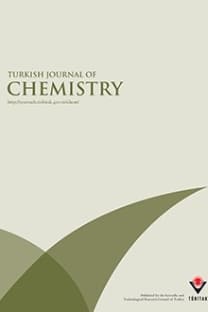Synthesis and Characterization of Block Copolymers Using Polysiloxane Based Macroazoinitiator
Poly(dimethylsiloxane-b-styrene) (PDMS-b-PSt) and poly(dimethylsiloxane-b-methyl methacrylate) (PDMS-b-PMMA) block copolymers containing siloxane segments were studied by the radical polymerizations of vinyl monomers such as styrene (St) and methyl methacrylate (MMA) using polydimethylsiloxane based macroazoinitiator (PDM-MAI) in solution. PDM-MAI was synthesized by reacting hydroxy-terminated polydimethylsiloxane (PDMS) and 4,4'-azobis (4-cyanopentanoyl chloride) (ACPC) having a thermodegradable azo-linkage. The polycondensation reaction between PDMS and ACPC (2:1, molar ratio) was carried out at room temperature. The polymerizations of St and MMA initiated by PDM-MAI were investigated using different PDM-MAI concentrations (1, 5, 10, and 15 wt. %) for various reaction times with a methyl ethyl ketone (MEK)/ dichloromethane (DCM) solvent mixture (3:1, molar ratio) as the reaction medium at 65 °C. The decomposition temperature of MAI azo groups was determined to be 125 °C by thermogravimetric analysis (TGA) and differential scanning calorimetry (DSC). PDM-MAI was characterized from the 1H-NMR spectrum, where the signals of the -CH2 resonance (2.32--2.71 ppm) and -CH3 resonance (1.65--1.70 ppm) of ACPC and the dimethylsiloxane protons (0.072 ppm) in siloxane segments are observed. PDM-MAI was also identified by the peak at 1740 cm-1 due to the C=O stretching, proving polyester formation, the peaks at 800 and 1260 cm-1 as the Si-CH3 deformation bands, and the Si-O-Si asymmetric stretching vibration bands appearing at 1100 cm-1 from the FTIR spectrum. The number-average molecular weight (Mn ) of PDM-MAI was determined to be 812 g/mol by vapor pressure osmometry (VPO) in chloroform. The number- and weight-average molecular weights (Mn and Mw ) of PDMS-b-PSt and PDMS-b-PMMA copolymers determined by gel permeation chromatography (GPC) show a decrease with respect to increasing PDM-MAI initial concentration in the polymerization mixture. In addition, the polymerization yields increase with increasing reaction time for constant PDM-MAI concentrations.
Synthesis and Characterization of Block Copolymers Using Polysiloxane Based Macroazoinitiator
Poly(dimethylsiloxane-b-styrene) (PDMS-b-PSt) and poly(dimethylsiloxane-b-methyl methacrylate) (PDMS-b-PMMA) block copolymers containing siloxane segments were studied by the radical polymerizations of vinyl monomers such as styrene (St) and methyl methacrylate (MMA) using polydimethylsiloxane based macroazoinitiator (PDM-MAI) in solution. PDM-MAI was synthesized by reacting hydroxy-terminated polydimethylsiloxane (PDMS) and 4,4'-azobis (4-cyanopentanoyl chloride) (ACPC) having a thermodegradable azo-linkage. The polycondensation reaction between PDMS and ACPC (2:1, molar ratio) was carried out at room temperature. The polymerizations of St and MMA initiated by PDM-MAI were investigated using different PDM-MAI concentrations (1, 5, 10, and 15 wt. %) for various reaction times with a methyl ethyl ketone (MEK)/ dichloromethane (DCM) solvent mixture (3:1, molar ratio) as the reaction medium at 65 °C. The decomposition temperature of MAI azo groups was determined to be 125 °C by thermogravimetric analysis (TGA) and differential scanning calorimetry (DSC). PDM-MAI was characterized from the 1H-NMR spectrum, where the signals of the -CH2 resonance (2.32--2.71 ppm) and -CH3 resonance (1.65--1.70 ppm) of ACPC and the dimethylsiloxane protons (0.072 ppm) in siloxane segments are observed. PDM-MAI was also identified by the peak at 1740 cm-1 due to the C=O stretching, proving polyester formation, the peaks at 800 and 1260 cm-1 as the Si-CH3 deformation bands, and the Si-O-Si asymmetric stretching vibration bands appearing at 1100 cm-1 from the FTIR spectrum. The number-average molecular weight (Mn ) of PDM-MAI was determined to be 812 g/mol by vapor pressure osmometry (VPO) in chloroform. The number- and weight-average molecular weights (Mn and Mw ) of PDMS-b-PSt and PDMS-b-PMMA copolymers determined by gel permeation chromatography (GPC) show a decrease with respect to increasing PDM-MAI initial concentration in the polymerization mixture. In addition, the polymerization yields increase with increasing reaction time for constant PDM-MAI concentrations.
